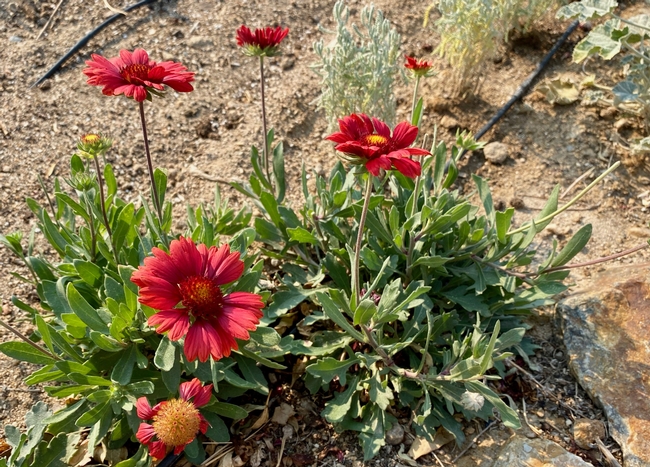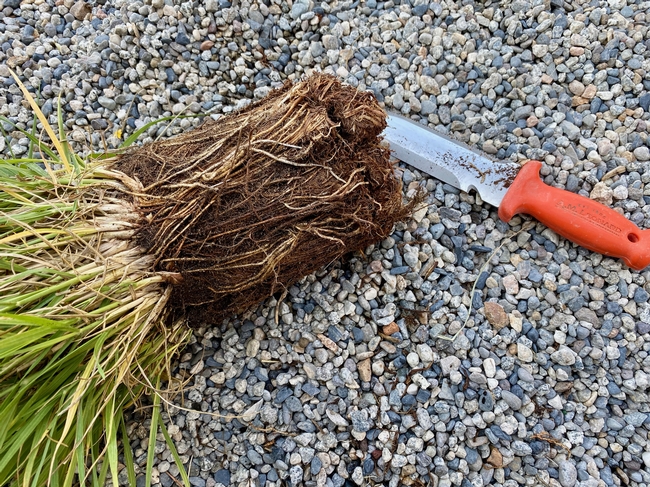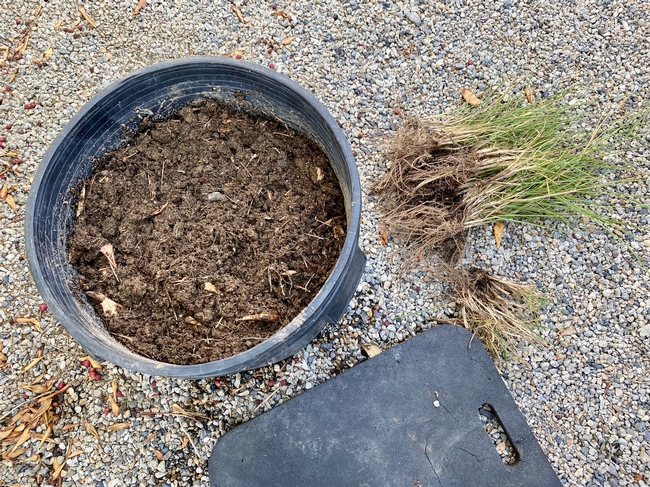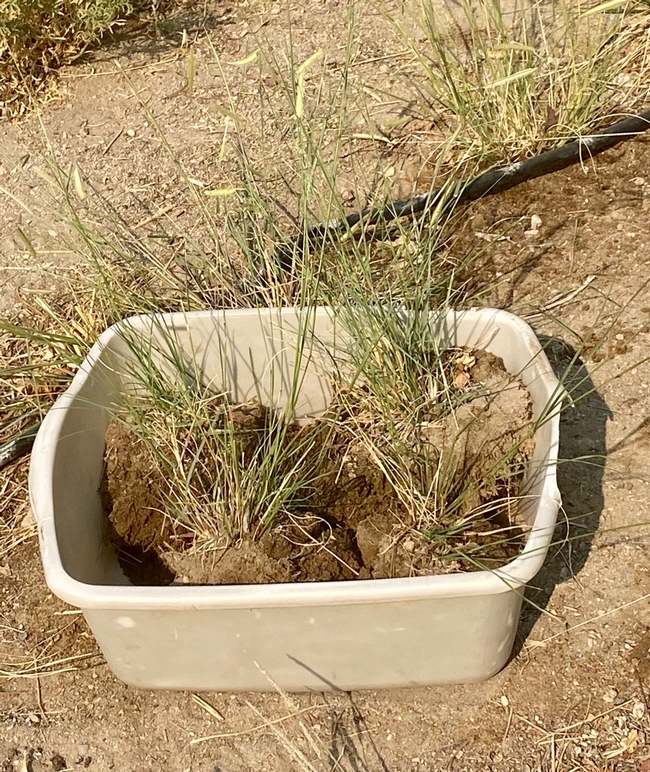Some years back, I toyed with the idea of starting my own wholesale nursery business. We're not talking acres of palm trees in huge wooden planters here, just a few kinds of natives, wildflowers and grasses. I even got a business license and came up with a name, but eventually decided it was more work than I wanted to invest. I did sell a few dozen plants to Steve at Chalfant Big Trees, but that was it. Little did I know it at the time, but taking the beginning steps toward my own nursery was to transform my own gardening!
One of the first things I did when I began to entertain the idea of my own nursery business was to set aside an area on our acre that I would use to field grow the plants. I rototilled, removed rocks, incorporated compost and laid out drip tape to this area. Though I never followed through with the business plan, I now had a nursery plot, and I have used it as such ever since. It is filled with dozens of types of plants, but the only customer this nursery is serving is me!

The beauty of this is that I nearly always have an appropriate plant “in my inventory.” I am constantly working at perfecting my landscaping, trying to match my plantings with the conditions of each location. Dustin Blakey's wise words form Master Gardener training always come to me: “Right plant in the right place.” That's the way I see my job as caretaker of the landscape. Especially in the challenging conditions here at the edge of the Volcanic Tableland, I have to be like a coach. I don't get to choose my dream roster, but instead have to find a way to maximize the potential of each of the players I have been given. There is nothing in my nursery plot that will not survive in my yard given the right conditions. When I'm evaluating different areas of my yard, thinking of what plants would complement the existing plantings, I nearly always have something that will work a few feet away in my nursery garden.



I suggest you give this strategy a try. It's not necessary to set aside a separate area in your yard. You can plant babies temporarily near existing plants, taking advantage of the irrigation that is already in place, and move them when the time comes. You can even repurpose a big pot—say maybe one you bought a tree in—and fill it with garden soil for a portable nursery.
It's so great to have a ready, year-round custom nursery at your disposal. Rather than having to search time after time at the local garden store, you'll have just the plant you want right in your own yard!

